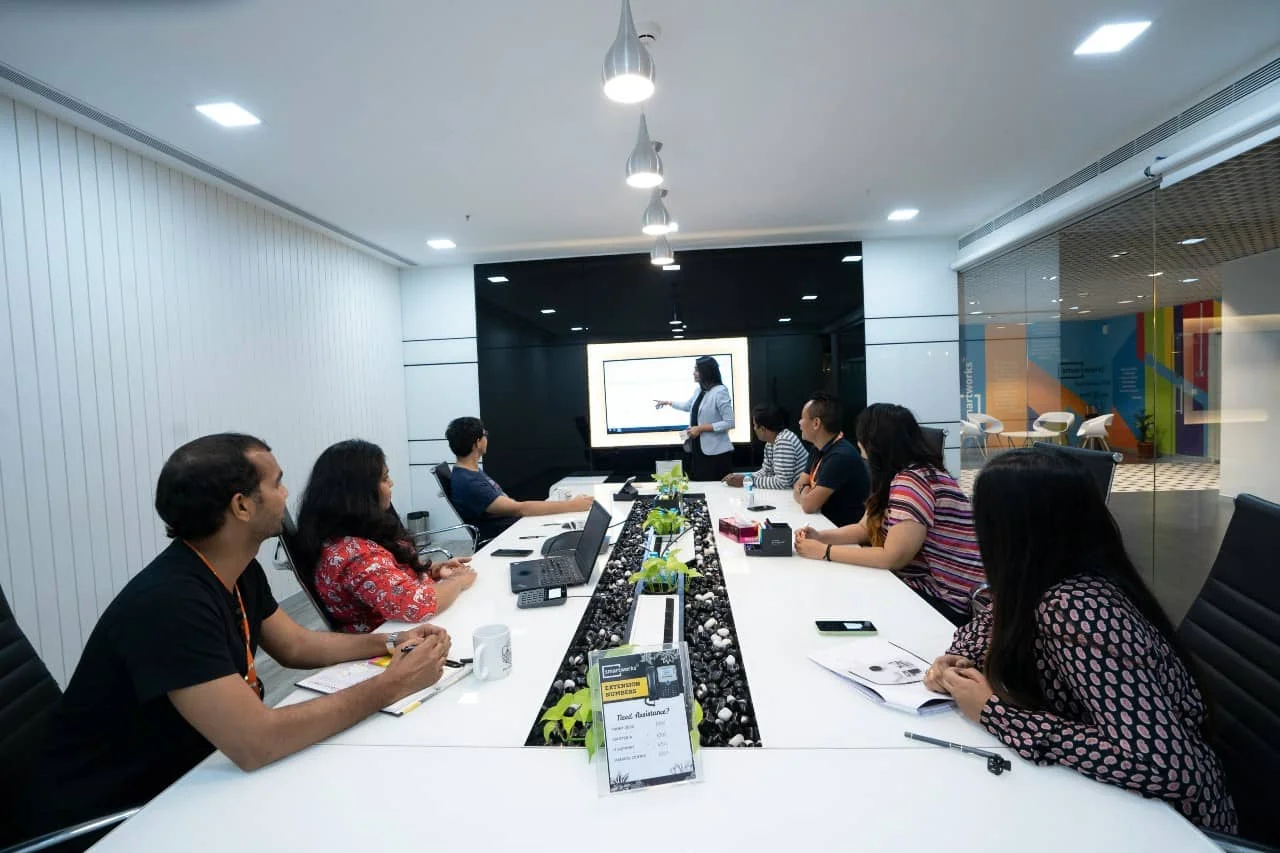Leading in the AI Era: The 8 Human Skills That Will Define Tomorrow's Leaders
After two decades of coaching executives across industries - from inspired startups to Fortune 500 giants - I’ve witnessed many technological shifts. But nothing quite like this AI revolution we’re living through right now.
Last month, I sat across from a CEO who confessed something that stopped me cold: “Thuy, I’m scared my gut instincts are becoming obsolete.” Here’s a leader who built a $500M company on intuition and instinct, now questioning whether human judgment still matters when algorithms can crunch numbers faster than we can blink.
The truth? We’re not becoming obsolete. We’re becoming more essential than ever. But the leadership playbook? That’s getting a complete rewrite.
The New Reality: When Machines Think, Leaders Must Feel
In my coaching work at Skyline Group, I’m seeing a fascinating paradox. As AI gets smarter, the leaders who thrive are doubling down on the messiest, most unpredictable aspects of human nature. They’re not trying to out-compute the computers—they’re amplifying what makes them irreplaceably human.
Here’s what I’ve learned from coaching over 170 executives through this transition: the future belongs to leaders who can dance with AI, not fight it. Let me share the eight skills that are separating the thrivers from the survivors.
1. Emotional Intelligence: Your Secret Weapon in a Data-Driven World
Remember when “soft skills” were considered nice-to-have? Those days are over. EQ isn’t just important—it’s your competitive advantage.
I recently worked with a tech executive who was religiously following AI-generated performance metrics. On paper, her team looked stellar. But something felt off during our coaching sessions. When she finally trusted her instincts and had real conversations with her people, she discovered widespread burnout that no algorithm had detected.
The AI Perspective: AI can tell you what your team is doing, but it can’t tell you how they’re feeling about it. Sentiment analysis might catch evident frustration in emails. Still, it misses the subtle signs—the slight hesitation in a voice, the forced smile in a video call, the brilliant engineer who’s started arriving precisely on time instead of early.
The Challenge: Here’s where it gets tricky. What happens when your emotional intelligence screams “something’s wrong,” but every AI dashboard shows green lights? I’ve seen leaders paralyzed by this disconnect. The answer isn’t to ignore the data—it’s to investigate the gap. Your EQ might be picking up signals that your systems haven’t learned to recognize yet.
2. Adaptability: Surfing the Waves of Constant Change
If you think change was fast before, buckle up. AI is accelerating everything, and the leaders I coach are learning to be comfortable with permanent uncertainty.
Take Sarah, a manufacturing VP I worked with. In six months, AI helped her company redesign its entire supply chain, automate quality control, and predict maintenance needs. But the real leadership challenge wasn’t technical—it was helping her 200-person team navigate the emotional rollercoaster of radical change.
The AI Perspective: AI excels at scenario planning and predictive modeling, but it can’t prepare you for the human chaos that comes with transformation. When your workforce is simultaneously excited about efficiency gains and terrified about job security, no algorithm can script that conversation.
The Deeper Challenge: Here’s what keeps me up at night as a coach—AI can process infinite variables, but leaders still need to make decisions with incomplete information. The key is developing what I call “informed intuition”—using AI’s insights as input, not instruction.
3. Critical Thinking: Your BS Detector in an AI World
This is where things get interesting. In my organizational psychology research, I studied how people make decisions under uncertainty. Now I’m watching leaders navigate something entirely new: uncertainty about the uncertainty itself.
The Black Box Problem: I was recently coaching a financial services leader whose AI system recommended denying loans to a specific demographic. The system was “learning” from historical data that was riddled with discriminatory patterns. The AI couldn’t explain its reasoning—it just knew that certain combinations of factors correlated with default rates.
This is the leadership minefield we’re all walking through. How do you apply critical thinking to a system that can’t show its work?
The AI Perspective: I can analyze thousands of data points and identify patterns, but I can’t tell you if those patterns are meaningful or just mathematical artifacts. When I flag a correlation, a human leader needs to ask: “Is this insight or is this bias dressed up as intelligence?”
The Evolution: Leaders are learning to become AI auditors. They’re asking different questions now: “What assumptions is this system making? What data is it NOT considering? Who built this algorithm, and what blind spots might they have had?“
4. Visionary Strategy: Seeing Beyond the Algorithm
Here’s something I’ve noticed in my coaching: AI makes excellent tacticians but terrible visionaries. It can optimize existing processes brilliantly, but it can’t imagine entirely new possibilities.
The AI Perspective: I can tell you the most efficient path to your stated goal, but I don’t know if that goal is worth pursuing. I can optimize your current business model, but I can’t dream up the business model that will make your current one obsolete.
The Challenge: I’m seeing leaders struggle with information overload. When AI can generate 47 different strategic scenarios in minutes, how do you choose? The answer isn’t in the data—it’s in your values, your understanding of human nature, and your ability to see patterns that transcend spreadsheets.
5. Inclusive Collaboration: The Human Multiplier Effect
This one’s close to my heart. In my years of coaching diverse teams, I’ve seen how different perspectives create breakthrough innovations. AI is amplifying this effect, but only if leaders know how to orchestrate it.
The AI Perspective: I can process diverse datasets and suggest ideas from multiple angles, but I don’t have cultural context, personal experiences, or the ability to read the room. I might suggest a brilliant marketing strategy that completely misses cultural nuances that would make it backfire spectacularly.
The Deeper Layer: Here’s what fascinates me—AI democratizes access to information, but it can also democratize bias. Leaders need to be even more intentional about seeking diverse perspectives, not just diverse data.
6. Lifelong Curiosity: Your Immune System Against Obsolescence
I don’t expect leaders to become AI engineers, but I do expect them to stay curious. The executives I coach who are thriving have one thing in common: they’re constantly asking “what if” and “why not.”
The AI Perspective: I’m only as good as the questions you ask me. A curious leader might ask me to analyze customer data and then follow up with: “What patterns might we be missing? What would happen if we looked at this problem from our competitor’s perspective? What data aren’t we collecting that we should be?”
The Practice: I encourage my clients to spend 30 minutes a week just playing with AI tools. Not to become experts, but to understand the boundaries of what’s possible. Curiosity is your early warning system for opportunity.
7. Storytelling: Making the Complex Compelling
Data doesn’t persuade people—stories do. I’ve watched brilliant leaders fail to get buy-in for AI initiatives because they led with spreadsheets instead of stories.
The AI Perspective: I can generate reports and analyze data, but I can’t craft a narrative that touches hearts and changes minds. I might tell you that implementing AI will increase efficiency by 23%, but I don’t know the story of how that efficiency will free up your team to focus on the creative work they love.
The Art: The best leaders I coach have learned to translate AI insights into human stories. They don’t just share the data—they share the implications, the possibilities, the human impact.
Here’s where my coaching work gets intense. Technical change is easy compared to human change. AI can redesign workflows in minutes, but it can’t help someone overcome 20 years of “that’s how we’ve always done it.”
The AI Perspective: I can map out change scenarios and recommend training programs, but I can’t hold space for the fear, excitement, and resistance that come with transformation. I can’t reassure someone that they’re still valuable when their job is being automated.
The Deeper Challenge: Leaders are learning to manage what I call “change fatigue.” When AI enables continuous optimization, how do you help teams adapt without burning out? The answer is in the human elements—trust, communication, and genuine care for people’s well-being.
When AI and Human Intuition Collide
Here’s the conversation I’m having more and more in my coaching sessions: What do you do when your gut says one thing and the AI says another?
Last quarter, I worked with a retail executive whose AI system insisted on stocking winter coats in August. The data was compelling—pre-orders were up, supply chains were optimized, and profit margins were maximized. But her 25 years of retail experience screamed “mistake.” She stocked the coats. They sold out in three days because of an unexpected cold snap.
The lesson? It’s not about choosing between human and artificial intelligence. It’s about learning to synthesize them.
The Decision-Making Revolution
AI is forcing us to evolve how we make decisions. When a machine can analyze more information in an hour than you could review in a lifetime, the question isn’t whether to use AI—it’s how to use it wisely.
I’m teaching leaders to think of AI as the world’s most sophisticated research assistant. It can gather information, identify patterns, and generate options. But the final decision? That’s still yours. Because leadership isn’t about having all the information—it’s about making the right choice with the information you have.
Your Next Steps
If you’re feeling overwhelmed by the pace of change, you’re not alone. But here’s what I’ve learned from coaching leaders through countless transformations: the future isn’t about competing with AI—it’s about collaborating with it.
Start small. Pick one area where you can experiment with AI tools. Ask different questions. Trust your instincts while remaining open to new possibilities. And remember—in a world of artificial intelligence, your humanity isn’t your weakness. It’s your strength.
The AI era isn’t about replacing human leadership—it’s about unleashing its full potential. The question isn’t whether you’ll adapt to this new reality. The question is: how will you lead the way?
Thuy Sindell is the President of Skyline Group’s Coaching Division and has coached executives through technological transformation for over 20 years. She is the author of four books on leadership and holds a PhD in Organizational Psychology.





